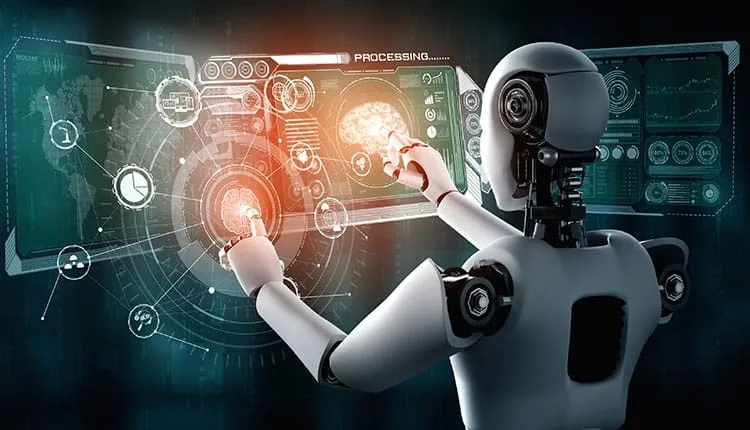Artificial intelligence and Technology in Healthcare: Transforming Modern Medicine

Estimated reading time: 5 minutes
Table of Contents
Abstract
Artificial intelligence (AI) and advanced technologies are revolutionizing healthcare by enhancing diagnostics, treatment, patient management, and operational efficiency. This article explores the intersection of AI and technology in healthcare, examining innovations in medical imaging, predictive analytics, robotics, telemedicine, and personalized medicine. It also discusses ethical considerations, challenges, and future directions. By integrating evidence from peer-reviewed studies and industry practices, this article provides a comprehensive overview of how AI and technology are shaping the future of healthcare.
Introduction
Artificial Intelligence and advanced technologies have become pivotal in modern healthcare, offering transformative solutions to traditional challenges. From reducing diagnostic errors to streamlining administrative tasks, AI’s impact spans across clinical and operational domains. The adoption of machine learning algorithms, robotics, and telehealth platforms reflects a growing shift toward technology-driven care delivery. This paper reviews the latest advancements and their implications for healthcare providers, patients, and policymakers.
1. Applications of Artificial intelligence and Technology in Diagnostics and Treatment
1.1 Medical Imaging and Diagnostics
AI-powered algorithms have significantly improved the accuracy and efficiency of medical imaging. Deep learning models can identify abnormalities in radiographs, MRIs, and CT scans with precision comparable to, or even exceeding, human radiologists. Key advancements include:
- Early Detection of Diseases: AI systems like Google’s DeepMind have demonstrated success in identifying diabetic retinopathy and age-related macular degeneration in retinal scans.
- Cancer Detection: Algorithms such as IBM Watson Health assist in detecting breast cancer in mammograms and lung nodules in CT scans.
- Automated Workflow: AI tools streamline workflows by prioritizing critical cases and reducing radiologist workload.
1.2 Personalized Medicine
AI facilitates the development of personalized treatment plans by analyzing genetic, lifestyle, and clinical data. For example:
- Pharmacogenomics: AI predicts patient responses to medications, optimizing drug prescriptions.
- Oncology: Machine learning models suggest tailored cancer treatments based on tumor profiles and genomic data.
- Chronic Disease Management: Predictive analytics forecast disease progression, enabling timely interventions.
2. Robotics in Healthcare is the Child of Artificial intelligence and Technology
2.1 Surgical Robotics
Robotic systems like the da Vinci Surgical System enhance precision and reduce recovery times in minimally invasive surgeries. These systems offer:
- Improved Dexterity: Robotic arms perform intricate movements beyond human capabilities.
- Enhanced Visualization: 3D imaging assists surgeons in visualizing complex anatomical structures.
- Reduced Complications: Minimally invasive techniques lower infection risks and improve outcomes.
2.2 Robotic Assistance in Patient Care
Robots are increasingly used in rehabilitation and elder care, offering services such as:
- Physical Therapy: Robotic exoskeletons aid in mobility training for stroke and spinal cord injury patients.
- Companionship Robots: Devices like Paro and Pepper provide emotional support to patients, reducing loneliness and improving mental health.
3. Use of Artificial intelligence and Technology in Telemedicine and Remote Monitoring
3.1 Growth of Telehealth Platforms
Telemedicine has surged in popularity, particularly during the COVID-19 pandemic, providing:
- Remote Consultations: Patients access healthcare professionals through video conferencing, reducing travel and wait times.
- Chronic Disease Management: Wearable devices monitor vitals, transmitting data to physicians for continuous care.
- Global Reach: Telehealth bridges gaps in rural and underserved areas, improving healthcare accessibility.
3.2 Integration of IoT in Healthcare
The Internet of Things (IoT) enables connected healthcare through devices that track real-time health metrics. Applications include:
- Wearables: Smartwatches and fitness trackers monitor heart rate, sleep patterns, and physical activity.
- Smart Hospitals: IoT devices optimize hospital workflows, track equipment usage, and ensure patient safety.

4. Ethical and Regulatory Challenges in Implementation of Artificial intelligence and Technology
4.1 Data Privacy and Security
The integration of AI raises concerns about data privacy and cybersecurity. Key issues include:
- Patient Confidentiality: Ensuring compliance with regulations like GDPR and HIPAA.
- Data Breaches: Securing sensitive medical records from unauthorized access.
4.2 Bias and Fairness
AI systems risk perpetuating biases present in training datasets. Addressing these biases is essential to:
- Ensure Equity: Avoiding disparities in care for marginalized populations.
- Enhance Accuracy: Reducing errors caused by incomplete or skewed data.
4.3 Ethical Use of AI
Ethical questions surrounding AI in healthcare include:
- Decision-Making: Balancing human oversight with AI-driven recommendations.
- Accountability: Determining liability in cases of AI-related errors.
5. Future Directions
5.1 Advancing AI Research
Ongoing research aims to improve AI capabilities in:
- Natural Language Processing (NLP): Enhancing AI’s ability to understand and interact with unstructured medical data.
- Explainability: Developing transparent AI models that provide interpretable insights for clinicians.
5.2 Expanding Access
Efforts to democratize AI-driven healthcare include:
- Affordable Technologies: Reducing costs to make AI tools accessible in low-resource settings.
- Training Programs: Educating healthcare professionals on AI integration and usage.
5.3 Collaboration and Standardization
Collaboration between tech companies, healthcare providers, and policymakers is critical to:
- Develop Standards: Establishing universal benchmarks for AI in healthcare.
- Foster Innovation: Encouraging interdisciplinary partnerships to drive advancements.
Conclusion
AI and technology are revolutionizing healthcare by enhancing diagnostic accuracy, treatment personalization, and patient care. While challenges related to ethics and data security remain, continued innovation and collaboration promise a future where healthcare is more efficient, accessible, and equitable. By embracing these advancements responsibly, the healthcare sector can deliver superior outcomes and transform lives worldwide.
References
- Topol, E. J. (2019). Deep Medicine: How Artificial Intelligence Can Make Healthcare Human Again. Basic Books.
- Rajkomar, A., Dean, J., & Kohane, I. (2019). Machine learning in medicine. New England Journal of Medicine, 380(14), 1347-1358.
- World Health Organization. (2023). Ethics and governance of artificial intelligence for health. Retrieved from https://www.who.int
- Shortliffe, E. H., & Sepúlveda, M. J. (2018). Clinical decision support in the era of artificial intelligence. JAMA, 320(21), 2199-2200.
- American Medical Association. (2024). AI in Medicine: Challenges and Opportunities. Retrieved from https://www.ama-assn.org




